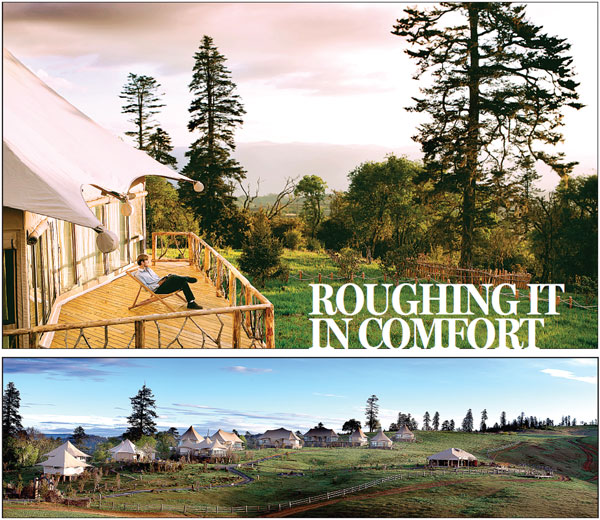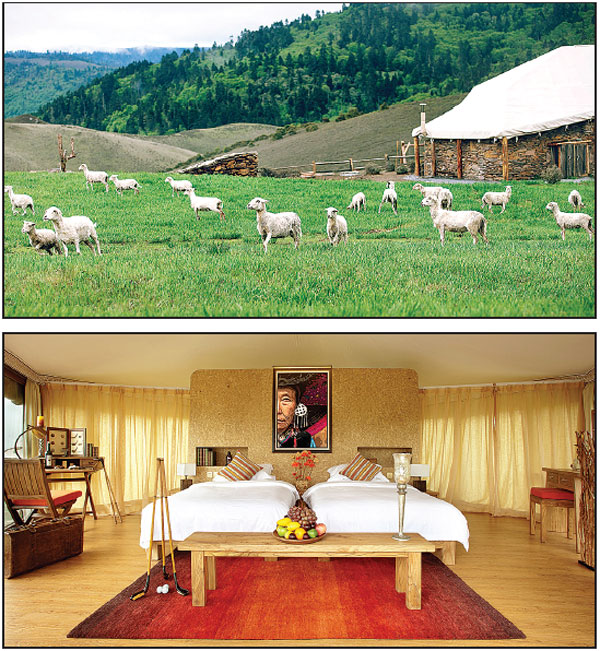Roughing it in comfort
Updated: 2015-02-14 08:04
By Yang Feiyue(China Daily)
|
||||||||
'Glamping' is catching on among well-heeled Chinese travelers.
It's rustic but not rugged. And that's the way they like it. A growing number of wealthy Chinese are "roughing it" the cushiest way imaginable, discovering wild places in exotic locations on luxury camping trips.
And they're willing to pay top dollar to go "glamping" - a portmanteau of "glamour" and "camping" - to relish the best of nature while avoiding its worst.
|
The Geladan prairie's fixed-glamping site opened in May 2013. Photos by Huang Jianguo / For China Daily |
|
From top: The sheep on Geladan prairie feed on grass; glamping is expensive, partly beause of the luxury amenities. Photos Provided to China Daily |
Lan Jun, 33, and his wife Deng Qiaoting, 28, spent more than 7,000 yuan ($1,119) a night on a luxury campsite during their trip to the Geladan prairie outside Yunnan's Lijiang city in August 2013. They stayed two nights.
The couple from Guangdong province's Foshan city enjoyed the excursion so much that it inspired them to also glamp in Kenya's Maasai Mara National Reserve last Spring Festival.
Geladan prairie's "tent hotel" is 3,600 meters above sea level. Visitors stay in tents ranging from 50 to 80 square meters. Each contains a table, beds and washrooms.
"My wife and I wanted to immerse ourselves in the mountain landscapes, breathe the fresh air and see how local people live, such as herding sheep as their livelihood," Lan says.
"We relished the alpine scenery. And my skin felt smooth after I bathed in the mountain spring."
The couple stayed in the largest tent.
"It was heated so we were warm during the cold nights."
Yet not everything about the trip is comfortable.
The glampsite is far from the beaten path - literally. There aren't real roads leading to the mountaintop. It can only be reached by SUV.
It takes three and a half hours to drive from Lijiang Sanyi Airport to the foot of the mountain and another hour and a half to reach the apex.
"Glamping serves travelers' spiritual needs to explore, challenge themselves, commune with nature, and engage different cultures and lifestyles," says Dong Qiuyun, chief media officer of the Lijiang-based glamping company Kingsway Tented Resort.
"We offer the chance to escape modern life's hustle and bustle and encounter exotic folk culture and history, and see what rustic life truly is."
Kingsway Tented Resort's business grew 60 percent from 2013 to 2014 compared to the year prior, Dong says.
Perhaps China's most common glamping is traveling by a recreational vehicle. Other glampers explore wild areas on foot from fixed base camps.
The most adventurous travelers sojourn from destination to destination in mobile tents like nomads along themed routes. (Many who glamp this way often stay among actual nomads.)
The Geladan prairie's fixed-glamping site opened in May 2013.
It has since developed specialized routes for guests to explore more remote areas.
Dong explains that even the basics are pricey to provide in far-flung locales - let alone luxury amenities.
"The high costs come from electricity, pollution alleviation and top-level services in remote areas, plus the large investments required to develop logistics and travel routes," Dong says.
Since most glampsites are isolated, they lack infrastructure, including transportation. That vastly increases overhead, he says.
Typical facilities include portable tents, hot water and sewage treatments. Guests dine on organic fare.
But despite the expenses, most glampsites aren't more comfortable than garden-variety starred hotels.
Glampers must understand a luxury campsite isn't the same as a luxury hotel.
And Geladan prairie's visitors should understand they may experience altitude sickness, Dong says. So the hotel advises travelers with such physical conditions as heart disease and hypertension not to take the trip.
Glamping is new in China but has long been a tourism mainstay in South Africa, North America, India and Thailand. Most glampsites are located in national parks and nature reserves.
China's luxury campsites are concentrated in Yunnan, and the Tibet and Inner Mongolia autonomous regions.
Asia's fastest-emerging route is forming along the Southern Silk Road, starting from Sichuan's provincial capital Chengdu and running 2,000 kilometers to India.
It spans Sichuan, Yunnan, Myanmar and Thailand, Dong says, and is ideal for more adventurous travelers.
Domestic agencies increasingly offer other routes.
Chinese travel website Tuniu.com offers an "outdoor-survival journey" that embarks from Tibet's capital Lhasa and runs westward to the border between Tibet and the Xinjiang Uygur autonomous region, before cutting across northern Tibet's Qiangtang Nature Reserve.
The route takes guests 4,500 meters above sea level, along swaths of towering snow-capped mountains and shimmering lakes. It's available from May to October.
The website also offers a "primitive" desert glamping trek that's available year-round.
Travelers can explore the Tengger Desert in Inner Mongolia's Alxa.
The desert's wild flora and fauna, undulating dunes and historical sites testify to ancient humanity and nature.
And a growing number of Chinese glampers explore these while enjoying the comforts of modern civilization.
Contact the writer at yangfeiyue@chinadaily.com.cn
(China Daily 02/14/2015 page18)
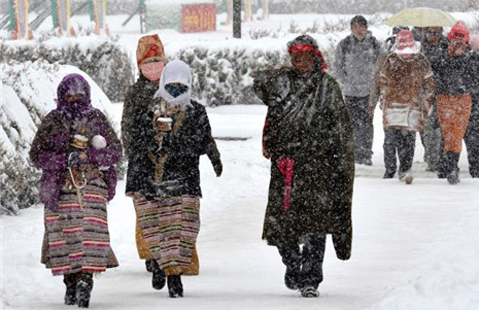
 Lhasa sees heaviest snow in two decades
Lhasa sees heaviest snow in two decades
 Samba sparkles in Brazil's Carnival season
Samba sparkles in Brazil's Carnival season
 'Taxi' wins Golden Bear in 65th Berlinale
'Taxi' wins Golden Bear in 65th Berlinale
 Let's take a selfie
Let's take a selfie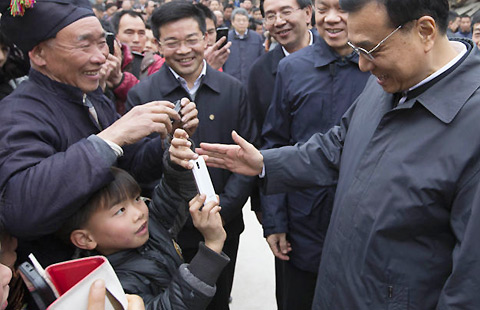
 Eight-year-old turns camera on premier
Eight-year-old turns camera on premier
 Pole dance under rime trees
Pole dance under rime trees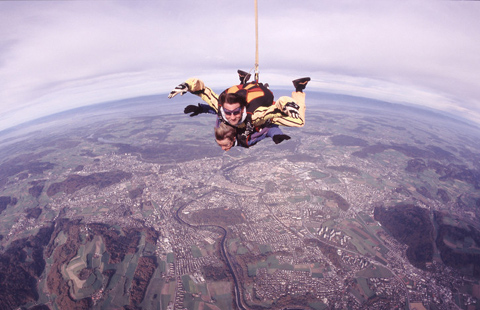
 Couples go to extreme height for love
Couples go to extreme height for love
 When Spring Festival rush encounters Valentine's Day
When Spring Festival rush encounters Valentine's Day
Most Viewed
Editor's Picks

|

|

|

|

|

|
Today's Top News
Apple studies self-driving car: auto industry source
Second-longest railway built overseas by China rolls out
Graft buster publishes corruption cases in environmental sector
2 deadly shootings within hours in Copenhagen
Xi's New Year visit marks village homecoming
Jackie Chan's son apologizes after release from jail
US smartphone launch still some time off for Xiaomi
Beijing strengthens festival safety
US Weekly

|

|
